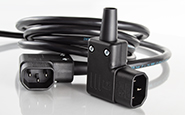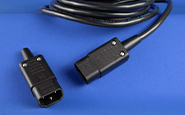IP (Ingress Protection) Codes
PDF—Download IP (Ingress Protection) Codes Chart
IEC 60529 outlines an international classification system for the sealing effectiveness of enclosures of electrical equipment against the intrusion into the equipment of foreign bodies (i.e., tools, dust, fingers) and moisture. This classification system utilizes the letters “IP” (“Ingress Protection”) followed by two digits. (An “X” is used for one of the digits if there is only one class of protection; i.e., IPX4 which addresses moisture resistance only.)
Degrees of Protection—First Digit
The first digit of the IP code indicates the degree that persons are protected against contact with moving parts (other than smooth rotating shafts, etc.) and the degree that equipment is protected against solid foreign bodies intruding into an enclosure.
| First Digit | Description |
|---|---|
| 0 | No special protection |
| 1 | Protection from a large part of the body such as a hand (but no protection from deliberate access); from solid objects greater than 50mm in diameter |
| 2 | Protection against fingers or other objects greater than 12.5mm |
| 3 | Protection from entry by tools, wires, etc., with a diameter or thickness greater than 2.5mm |
| 4 | Protection from entry by solid objects with a diameter or thickness greater than 1.0mm |
| 5 | Protection from the amount of dust that would interfere with the operation of the equipment |
| 6 | Dust-tight; protected from the ingress of dust |
Degrees of Protection—Second Digit
Second digit indicates the degree of protection of the equipment inside the enclosure against the harmful entry of various forms of moisture (e.g. dripping, spraying, submersion, etc.).
| Second Digit |
Description |
|---|---|
| 0 | No special protection |
| 1 | Protection from vertically dripping water |
| 2 | Protection from vertically dripping water (15° tilted) |
| 3 | Protection from sprayed water |
| 4 | Protection from splashed water |
| 5 | Protection from jetting water |
| 6 | Protection from powerfully jetting water |
| 7 | Protection against temporary immersion |
| 8 | Protection against complete, continuous submersion in water |
| 9 | Protection against high pressure/steam jet cleaning |
Refer to standards IEC 60529 and DIN 40050-9.






